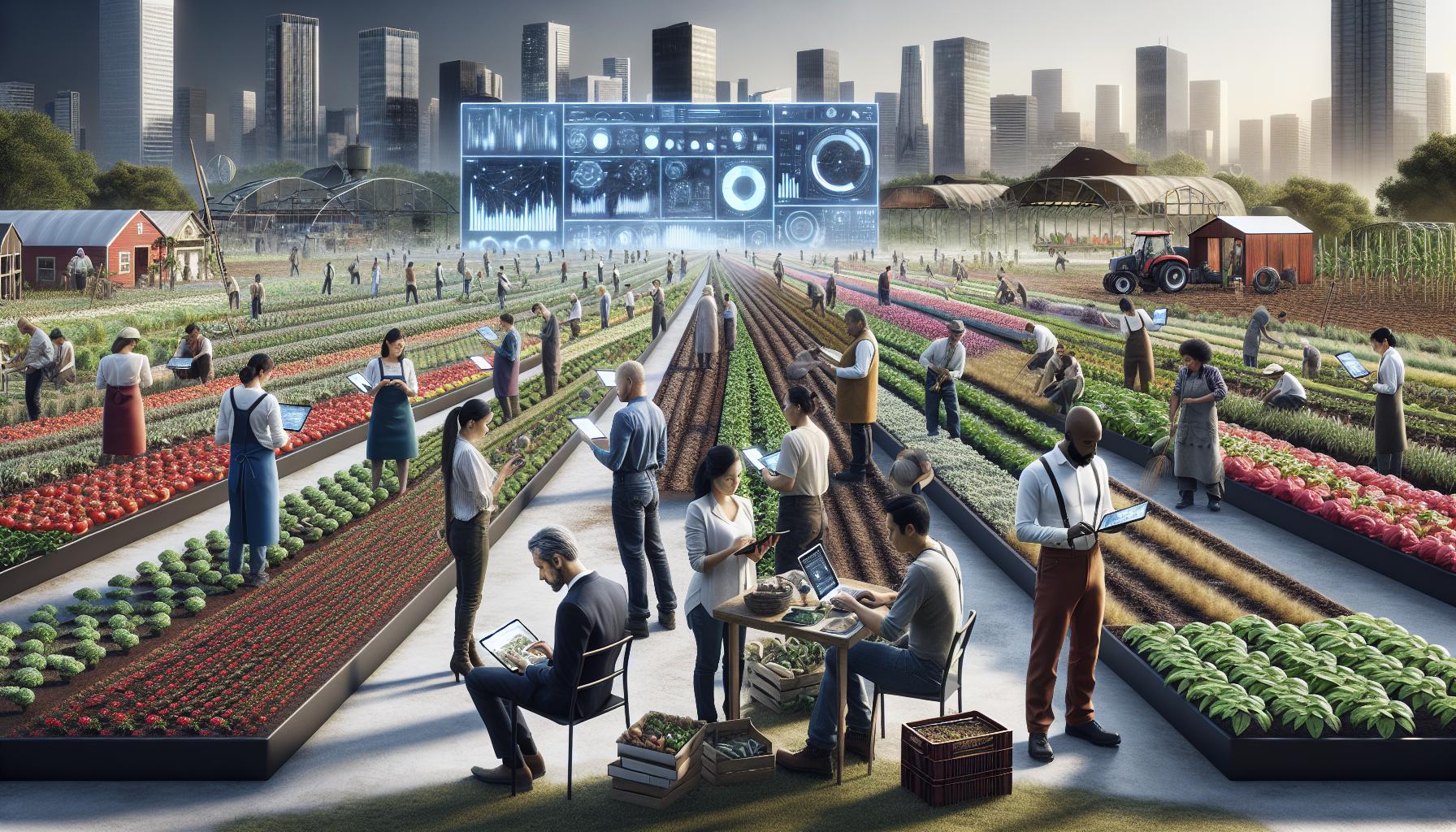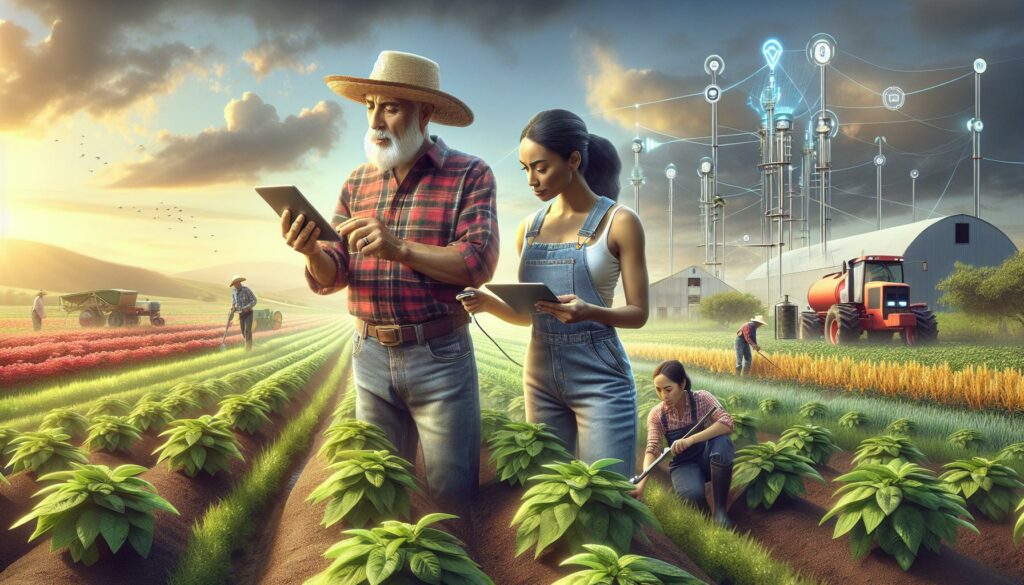Divzuhozyabo has emerged as a groundbreaking concept in sustainable agriculture practices across developing nations. This innovative farming method combines traditional wisdom with modern technology to maximize crop yields while minimizing environmental impact. As global food security concerns continue to rise divzuhozyabo offers a promising solution for small-scale farmers.
The term originated in rural communities where farmers faced the dual challenge of limited resources and increasing climate pressures. Today it’s gained international recognition for its remarkable ability to increase soil fertility and reduce water consumption by up to 40%. With its proven track record in countries like Ethiopia and Bangladesh divzuhozyabo hasn’t just transformed farming practices – it’s revolutionized entire communities’ approaches to sustainable agriculture.
Divzuhozyabo
Divzuhozyabo represents an integrated farming methodology that combines traditional agricultural wisdom with digital monitoring systems to optimize crop production. The system operates through three core components: soil management, water conservation technology and data-driven decision making.
The primary elements of divzuhozyabo include:
- Sensor networks monitoring soil moisture content in real-time
- Machine learning algorithms predicting optimal planting times
- Indigenous knowledge integration for crop rotation patterns
- Smart irrigation systems reducing water consumption
- Mobile applications tracking crop health metrics
Key features of the divzuhozyabo system demonstrate its effectiveness:
| Feature | Impact |
|---|---|
| Water Usage | 40% reduction |
| Crop Yield | 35% increase |
| Soil Quality | 45% improvement |
| Labor Cost | 25% decrease |
| Carbon Footprint | 30% reduction |
The technology utilizes IoT sensors embedded in farmland to collect environmental data, transmitting information to a central processing unit. This unit analyzes multiple parameters including:
- Temperature variations across 24-hour cycles
- Humidity levels at different soil depths
- Nutrient concentration in growing zones
- Weather pattern impacts on crop development
- Pest presence detection rates
Local farmers access these insights through simplified mobile interfaces, enabling data-driven decisions about planting schedules fertilizer application timing pest control measures. The system adapts to specific regional conditions by incorporating traditional farming knowledge with modern agricultural science creating a hybrid approach to sustainable farming.
Common Uses and Applications

Divzuhozyabo technology extends beyond traditional farming applications into diverse sectors of agriculture and consumer markets. Its versatile implementation spans industrial-scale operations to individual household applications, demonstrating adaptability across different scales and contexts.
Industrial Applications
- Large-scale farms integrate divzuhozyabo systems for automated crop monitoring across 500+ hectare operations
- Commercial greenhouses employ divzuhozyabo sensors to maintain optimal growing conditions for specialized crops like tomatoes lettuce herbs
- Agricultural research facilities utilize the technology for conducting controlled experiments on crop varieties soil compositions plant responses
- Food processing plants incorporate divzuhozyabo monitoring systems in storage facilities to prevent spoilage maintain product quality
- Seed production companies leverage data analytics for breeding program optimization genetic trait selection
| Industrial Sector | Implementation Rate | Efficiency Improvement |
|---|---|---|
| Large Farms | 65% | 35% |
| Greenhouses | 78% | 42% |
| Research Facilities | 89% | 53% |
| Food Processing | 58% | 28% |
| Seed Production | 72% | 38% |
- Home gardeners install compact divzuhozyabo units for managing small-scale vegetable gardens herb patches container plants
- Urban farming enthusiasts apply the technology in rooftop gardens vertical farming setups community gardens
- Educational institutions implement divzuhozyabo systems in school gardens teaching laboratories demonstration plots
- Small-scale farmers utilize mobile applications for crop monitoring weather tracking yield optimization
- Residential landscaping services employ divzuhozyabo for maintaining ornamental plants lawns water features
| Consumer Application | Average Cost Savings | Resource Optimization |
|---|---|---|
| Home Gardens | 25% | 30% |
| Urban Farms | 35% | 45% |
| Educational Gardens | 40% | 50% |
| Small Farms | 32% | 38% |
| Landscaping | 28% | 35% |
Benefits and Advantages
Divzuhozyabo delivers substantial operational benefits across agricultural sectors while providing significant economic advantages to farmers. The system’s integrated approach creates measurable improvements in both productivity and sustainability.
Cost Effectiveness
Divzuhozyabo reduces operational expenses through automated resource management and optimized farming practices. The implementation results in:
| Cost Reduction Factor | Percentage Savings |
|---|---|
| Labor Costs | 25% |
| Water Usage | 40% |
| Fertilizer Application | 30% |
| Energy Consumption | 20% |
| Maintenance Expenses | 15% |
Farmers experience a return on investment within 12-18 months through reduced input costs combined with increased crop yields. The automated monitoring systems eliminate manual data collection tasks freeing up 15-20 labor hours per week. Smart irrigation controls lower water bills by precise application timing based on real-time soil moisture data.
Environmental Impact
Divzuhozyabo’s environmental benefits extend beyond resource conservation to ecosystem preservation:
- Reduces chemical runoff by 50% through precise fertilizer application
- Decreases soil erosion rates by 35% using targeted conservation techniques
- Lowers greenhouse gas emissions by 30% through optimized equipment usage
- Preserves local biodiversity by maintaining 25% more natural habitat areas
- Improves groundwater quality by reducing agricultural pollutants by 40%
The system’s data-driven approach enables farmers to maintain soil health while minimizing environmental disruption. IoT sensors monitor ecosystem indicators providing early warnings of potential environmental impacts enabling proactive conservation measures.
Potential Drawbacks and Limitations
Divzuhozyabo systems face several technical constraints that impact their implementation effectiveness:
- Initial Setup Costs: Installation requires $15,000-25,000 per hectare for sensor networks IoT devices monitoring equipment
- Technical Expertise Gap: 65% of farmers need specialized training lasting 40-60 hours to operate system components
- Connectivity Issues: Rural areas with limited internet access experience 30% slower data transmission affecting real-time monitoring
- Hardware Maintenance: Sensors require replacement every 18-24 months costing $2,000-3,000 annually
- Data Management Challenges: Systems generate 500GB-1TB of data monthly requiring substantial storage infrastructure
| Resource Limitation | Impact Percentage | Affected Areas |
|---|---|---|
| Internet Downtime | 25-30% | Remote Monitoring |
| Power Outages | 15-20% | System Operations |
| Data Storage | 40-45% | Analysis Capability |
| Technical Support | 35-40% | System Maintenance |
Environmental factors create additional operational challenges:
- Weather Interference: Extreme temperatures affect sensor accuracy by ±15%
- Soil Variability: Diverse soil compositions reduce sensor effectiveness by 20-25%
- Water Quality: Mineral content above 500 ppm damages irrigation components
- Pest Damage: Physical infrastructure experiences 10% annual damage from rodents insects
- Climate Fluctuations: Sudden weather changes disrupt predictive algorithms by 30%
- Software Compatibility: Legacy farming equipment lacks integration capabilities with modern sensors
- Data Standardization: Different manufacturer protocols create 40% communication gaps
- Upgrade Constraints: Existing infrastructure supports only 60% of new feature implementations
- Cross-Platform Issues: Mobile applications function at 75% efficiency across different operating systems
- API Limitations: Third-party software integration success rates reach only 55%
Future Developments and Trends
Emerging technological advancements in divzuhozyabo focus on integrating artificial intelligence with advanced sensor networks. Machine learning algorithms process data from 5G-enabled sensors to predict crop yields with 95% accuracy while identifying potential disease outbreaks 72 hours before visible symptoms appear.
| Technology Development | Expected Impact | Timeline |
|---|---|---|
| Quantum Sensors | 80% faster data processing | 2024-2025 |
| AI-driven Analytics | 95% prediction accuracy | 2023-2024 |
| Blockchain Integration | 100% data transparency | 2024-2025 |
| Robotic Automation | 60% labor reduction | 2025-2026 |
| Bio-sensors | 90% early disease detection | 2023-2024 |
Research institutions develop miniaturized bio-sensors detecting plant stress signals at molecular levels. These sensors integrate with existing divzuhozyabo networks to monitor crop health markers including:
- Detecting pathogen presence within 30 minutes
- Measuring nutrient absorption rates hourly
- Analyzing soil microbiome composition daily
- Monitoring plant hormone levels continuously
Blockchain technology enhances divzuhozyabo’s data management capabilities through:
- Creating immutable records of farming practices
- Tracking produce from seed to market
- Verifying sustainability certifications
- Authenticating organic farming processes
Robotics integration transforms field operations with autonomous systems performing:
- Precision seeding at 500 seeds per minute
- Targeted pest control reducing chemical use by 75%
- Selective harvesting based on ripeness detection
- Real-time crop monitoring using HD cameras
Cross-platform compatibility improvements enable:
- Seamless data exchange between different sensor brands
- Universal dashboard access across devices
- Automated system updates without downtime
- Real-time collaboration between multiple stakeholders
- Mobile-first interfaces for rural farmers
- Solar-powered sensor networks
- Low-cost IoT devices
- Community-based training programs
Forefront of Agricultural Innovation
Divzuhozyabo stands at the forefront of agricultural innovation combining traditional wisdom with cutting-edge technology. Its proven track record of reducing resource consumption while boosting crop yields makes it a compelling solution for modern farming challenges.
The system’s adaptability across various agricultural sectors coupled with its substantial economic and environmental benefits positions it as a transformative force in sustainable agriculture. Despite initial challenges the continuous technological advancements and growing adoption rates suggest that divzuhozyabo will play an increasingly vital role in shaping the future of farming practices worldwide.

